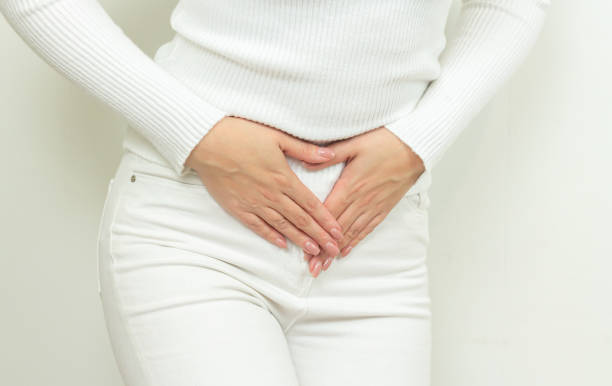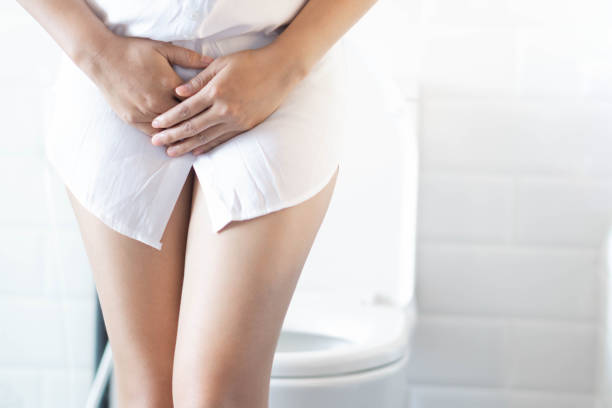Health Conditions
Get Ready to Explore the Different Types of Urinary Incontinence
It is estimated that millions of people all over the world suffer with urinary incontinence, which is a prevalent condition. Urine incontinence can be a cause of embarrassment and annoyance; however, it is essential to have a thorough grasp of the many types of urinary incontinence in order to properly manage the symptoms and acquire the appropriate therapy. Within the scope of this essay, we will investigate the many categories of urinary incontinence as well as the various management strategies that are at our disposal.
Stress Urinary Incontinence
One of the types of urinary incontinence is the condition known as stress urinary incontinence. It happens when a person experiences pee leakage as a result of physical movement or pressure, such as when they cough or sneeze. Women, particularly after giving birth or during menopause, are more likely to encounter this condition than men.
In many cases, the underlying cause of stress urine incontinence is a weakening of the pelvic floor muscles, which are responsible for providing support to the bladder and the urethra. This disorder can have a substantial influence on a person’s quality of life by impairing their ability to engage in physical activity, causing them to feel embarrassed, and reducing their ability to interact with others.
Depending on the severity of the symptoms, there are a variety of treatment options available for stress urinary incontinence. Enhancing bladder control and strengthening the muscles of the pelvic floor can be accomplished through the use of non-invasive methods such as pelvic floor exercises, which are also referred to as Kegel exercises. To provide additional support to the bladder and urethra, medical procedures such as vaginal inserts, pessaries, or surgery may be advised in more severe situations. These interventions are intended to provide additional support.

Urge Urinary Incontinence
Another one of the types of urinary incontinence is the sudden and overwhelming need to urinate. This is the defining characteristic of urge urine incontinence, which frequently results in leaking before the individual reaches the appropriate restroom. Having an overactive bladder, which causes the muscles of the bladder to contract involuntarily even when the bladder is not full, is a common cause of this condition. Certain drugs, urinary tract infections, and neurological problems are some of the potential causes of this form of incontinence. Other potential causes include illnesses that affect the nervous system.
A mix of behavioral and medicinal therapies is required in order to effectively manage urge urine incontinence. The capacity of the bladder can be increased by the use of bladder training techniques such as delaying urination and scheduled voiding. These approaches can also assist reduce the number of times that the bladder needs to be emptied urgently. For the purpose of efficiently managing the symptoms, it is also possible to administer medications that either relax the muscles of the bladder or block particular nerve signals.
Overflow Urinary Incontinence
Among those mentioned, here is another one of the types of urinary incontinence, the condition known as overflow urinary incontinence. This happens when the bladder does not empty as it should, which eventually results in the bladder being full all the time and producing leaks. It is common for this kind of incontinence to be caused by weak muscles in the bladder or by a blockage in the urinary tract that prevents the bladder from emptying entirely. Nerve damage or the use of certain medications that alter the function of the bladder can possibly be the cause of this condition.
Treatment for urine incontinence caused by overflow is centered on resolving the underlying cause of the condition. In the event that an obstruction is present, it perhaps can be eliminated using surgical techniques or other methods. Additionally, medications that assist relax the muscles of the bladder or enhance the rate at which the bladder empties may be administered. Intermittent catheterization, in which a tiny tube is placed into the urethra to drain urine, may be required in certain instances in order to properly treat the condition.

Functional Urinary Incontinence
Functional Urinary Incontinence is one of the types of urinary incontinence that is not caused by physical or medical problems; rather, it is caused by mobility issues or cognitive deficits that make it difficult to reach the restroom in a timely manner. This particular type of incontinence is frequently observed in people who are of older age or who suffer from illnesses such as arthritis, dementia, or physical impairments. However, given to the underlying reasons that contribute to the incontinence, it can be very difficult to manage.
In order to effectively manage functional urine incontinence, it is necessary to address the mobility or cognitive difficulties that are the root cause of the condition. A few examples of this would be the provision of assistive devices like walkers or canes, the modification of the living environment to provide better access to restrooms, or the provision of reminders or support to ensure that toileting occurs at the appropriate time. There are certain circumstances in which behavioral approaches, such as prompted voiding, which involves a caregiver assisting the individual in maintaining a regular schedule for toileting, can also be effective.

Mixed Urinary Incontinence
Mixed urinary incontinence is a combination of urge incontinence and stress incontinence, which makes it much more difficult to manage than other types of incontinence. This particular form of incontinence frequently calls for an all-encompassing treatment strategy that takes into account both the involuntary contractions of the bladder as well as the weakening of the muscles that make up the pelvic floor. When it comes to mixed urinary incontinence, the treatment choices may involve a combination of behavioral approaches, pelvic floor exercises, pharmaceuticals, and, in more severe situations, surgical treatments.
Age, pregnancy, childbirth, obesity, certain medical disorders, and drugs are some of the risk factors that can lead to urine incontinence. It is crucial to note that urinary incontinence can be caused by a variety of variables and risk factors. If you are having urinary incontinence, it is strongly suggested that you seek the advice of a healthcare professional in order to receive an accurate diagnosis and a treatment plan that is tailored to your specific needs.
Conclusion
Understanding the different types of urinary incontinence is essential for effectively managing this common condition. Whether I am dealing with stress, urge, overflow, functional, or mixed urinary incontinence, there are various treatment options available to help me regain control and improve my quality of life. I’ll remember that seeking medical advice and exploring the appropriate management strategies can make a significant difference in managing urinary incontinence and reclaiming my freedom.
Trusted Health, Wellness, and Medical advice for your well-being


